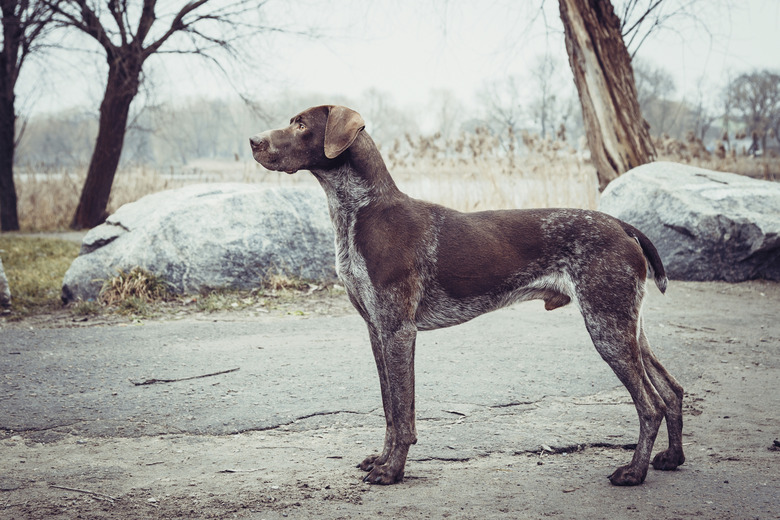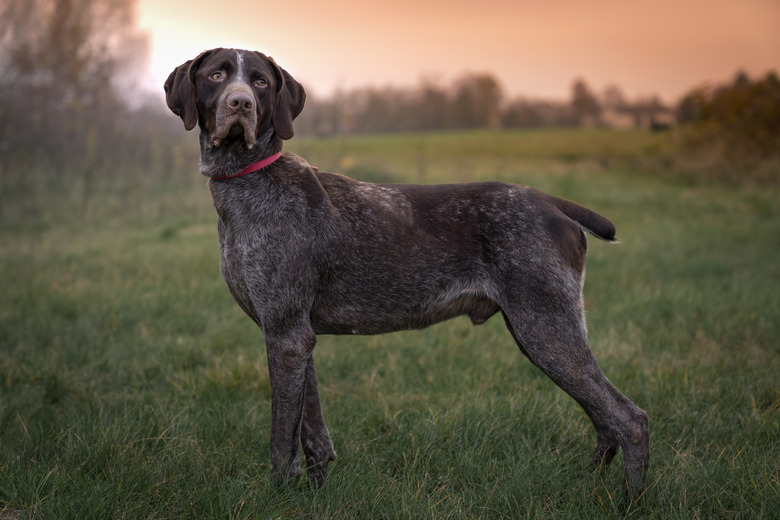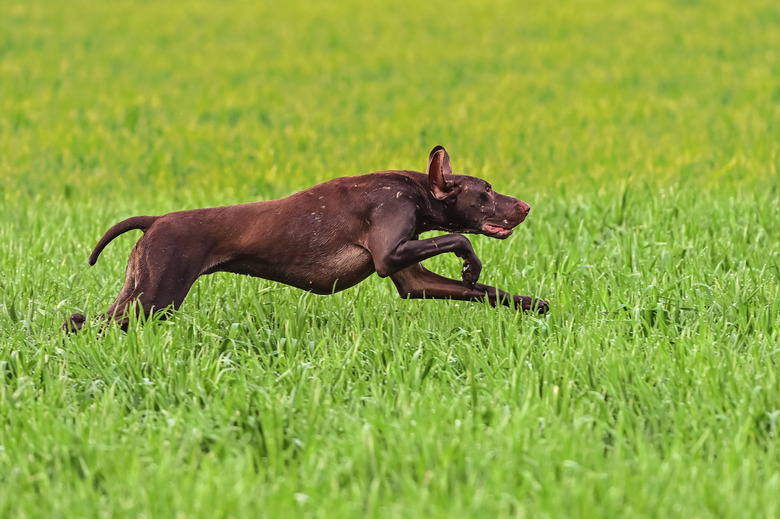Short Hair Vs. English Pointer? Differences Between German Shorthaired & English Pointers
You'll find more similarities than differences between the pointer, also known as the English pointer, and the German shorthaired pointer. Both are hunting dogs extraordinaire, with lean, muscular physiques. The English shorthaired pointer is primarily a field dog for birds, while the German shorthaired pointer was developed as an all-around hunter.
Pointer breed histories
Pointer breed histories
Both breeds claim some ancestry from the Spanish pointer, which may have arrived in Britain in the early 18th century. The modern pointer also descends from crosses with greyhounds, bloodhounds, foxhounds and setters.
The German shorthaired pointer was developed in 19th century Germany as a versatile sporting dog. English pointers are part of their genetic makeup, along with bloodhounds.
Differences in physical appearance
Differences in physical appearance
At maturity, male German shorthaired pointers stand 23 to 25 inches tall at the shoulders, weighing between 55 to 70 pounds. Female German shorthaired pointers stand 21 to 23 inches tall, weighing 45 to 60 pounds. Pointers are slightly larger, with males standing between 25 to 28 inches tall, weighing 55 to 75 pounds, and females standing 23 to 26 inches tall, weighing between 44 to 65 pounds.
Both breeds sport short coats, but the German shorthaired pointer is either liver or liver and white. The pointer breed standard notes that "a good pointer can't be a bad color." Acceptable pointer colors include liver, black, orange or lemon, in either solid colors or mixed with white.
Pointer temperament differences
Pointer temperament differences
If you plan to hunt your dog, either breed makes a fine choice. If your dog is primarily a family pet, English pointer puppies might have a slight advantage over the German shorthaired variety. While both are high-energy dogs who require a lot of exercise, the pointer is somewhat calmer than the German shorthaired pointer. Both make good watchdogs and get along with other canines. Cats are another story.
These dogs are too strong and energetic for young children, but make fun companions for older kids, who can keep with their activity level. While both breeds are smart, the pointer may prove harder to train, as he could harbor a stubborn streak compared to the German shorthaired pointer's eagerness to please.
Exercise and training considerations
Exercise and training considerations
Neither breed is really suitable for city or apartment living, unless the owner can provide a few hours a day for exercise. A big backyard with a high fence doesn't negate the need for long daily walks or runs, but it does allow the dog to let off some steam. If that energy has no constructive outlet, either breed can become destructive.
The German shorthaired pointer is especially vulnerable to separation anxiety, so crate training might save your home's interior while you're away. Both breeds need early socialization and training. If you don't hunt your dog, agility training, obedience competitions and other canine sports provide necessary physical and mental stimulation.
Pointer health issues
Pointer health issues
Both breeds may suffer from hip dysplasia, a congenital hip disorder requiring surgical correction. Both breeds also have floppy ears that need to be cleaned and checked for infection regularly.
Pointers may develop cataracts, as well as progressive retinal atrophy, which eventually causes complete vision loss. Pointers are prone to epilepsy, although the occurrence of this condition has decreased. Other conditions to watch out for include hives, which may be caused by an allergy or an autoimmune condition, and bloat.
German shorthaired pointers may come down with a relatively rare eye disease known as cone degeneration. Various types of cancer affect the German shorthaired pointer. The hereditary von Willebrand's disease, a sort of canine hemophilia, occurs in the German shorthaired pointer.


